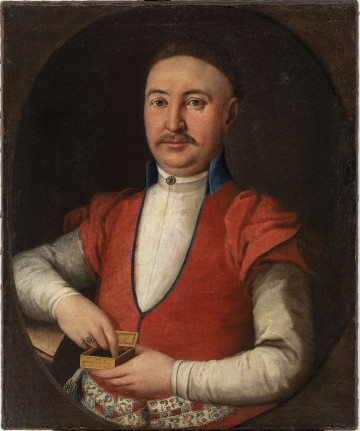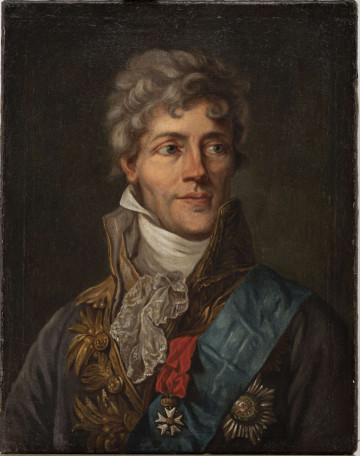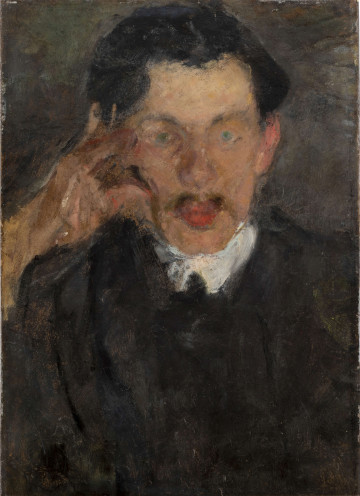
Portrait of Mr Chełmicki
1785 — 1790
National Museum in Lublin
Part of the collection: Polish symbolic painting from the beginning of the 20th c.
There are many themes in the work of Jacek Malczewski, an outstanding Polish symbolist. In his ‘painting poems,’ he conveyed personal experiences and national dramas. He left a vast legacy, portraits being an essential part of it. He immortalised people from the world of culture and politics, from his circle of friends and family. For over half a century, he painted self-portraits, the most significant number of which he created among all Polish artists. His contemporaries criticised Malczewski's almost obsessive predilection for portraying himself. He was accused of pride and self-love. The choice of this subject was probably influenced by his personality and ennoblement and mythologisation of the artist's role, which took place in the second half of the 19th century. In his self-portraits, Malczewski appeared in various incarnations and costumes. The hero of the scenes appeared in real and fantastic spaces, surrounded by natural and imaginary figures: muses, chimaeras, phantoms and fauns. He impersonated literary and fairy-tale characters – knights, pilgrims, prophets, and historical and biblical figures, such as Christ.
In Autoportrecie z Parkami [Self-Portrait with Parks], Malczewski depicted himself with the painter's attributes in the space of a house. The background for his monumental silhouette, almost emerging from the picture frame, is a view of a green garden visible through the wide-open amphitheatre door. Behind the threshold of the studio, two women are sitting opposite each other, unravelling a thread from a ball, which they will cut at the right moment. A third woman squats further down, on the threshold of the house. These are the eponymous Parks (Mojras) – mythical guardians and custodians of life. The three sisters – Klotho, Lachesis and Atropos – were the spokeswomen of human destiny. The goddesses of life, death and destiny knew the future of men and gods. From birth, every human being had his or her own Moira, who determined the length of life, the happiness and misfortune that belonged to them. This self-portrait can be read as Malczewski's painterly reflection on the inevitable approaching end of life. The tares he is holding in his hand are a veiled admission of his weaknesses. In the biblical interpretation, the weed spoiling grain symbolises sinful people who oppose God's intentions. Malczewski, a painter aware of his greatness, looks us in the eye with great seriousness and talks about his artistic service and the fact that he sometimes went astray.
Bożena Kasperowicz
Author / creator
Dimensions
cały obiekt: height: 70 cm, width: 97 cm
Object type
painting
Technique
oil technique
Material
cardboard, oil-based paint
Creation time / dating
Creation / finding place
Owner
The National Museum in Lublin
Identification number
Location / status

1785 — 1790
National Museum in Lublin

1801 — 1810
National Museum in Lublin

1900
National Museum in Lublin
DISCOVER this TOPIC
National Museum in Lublin
DISCOVER this PATH
Educational path